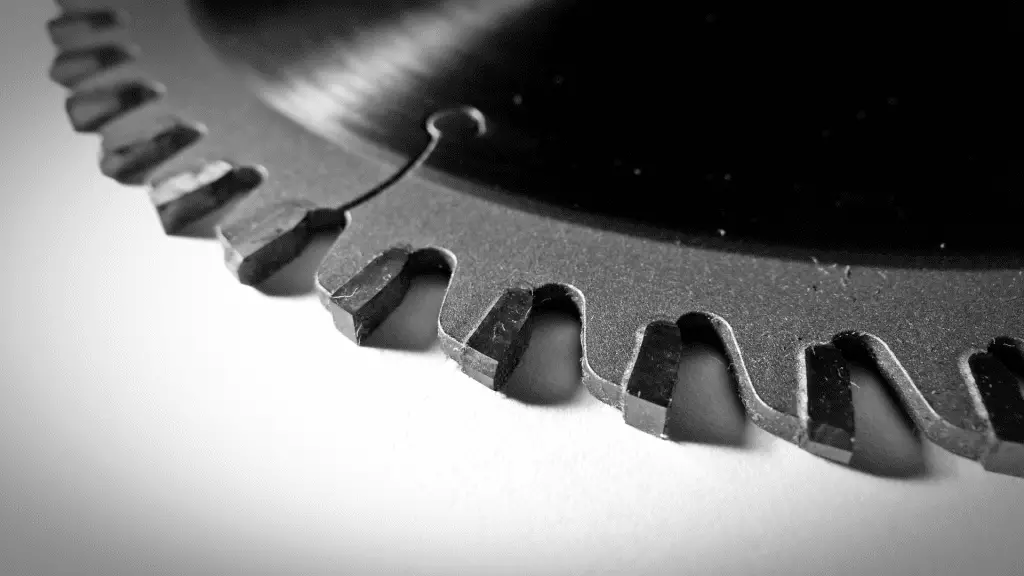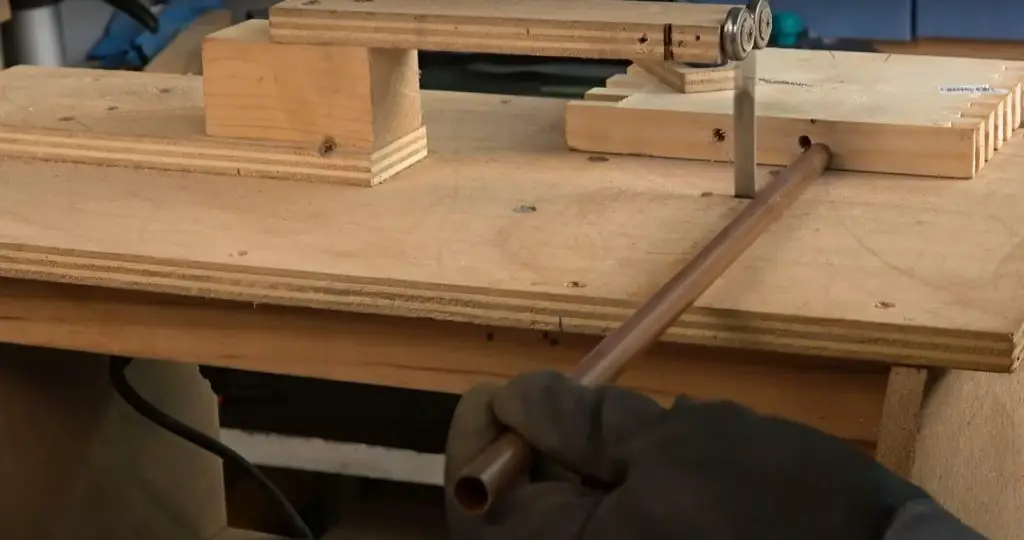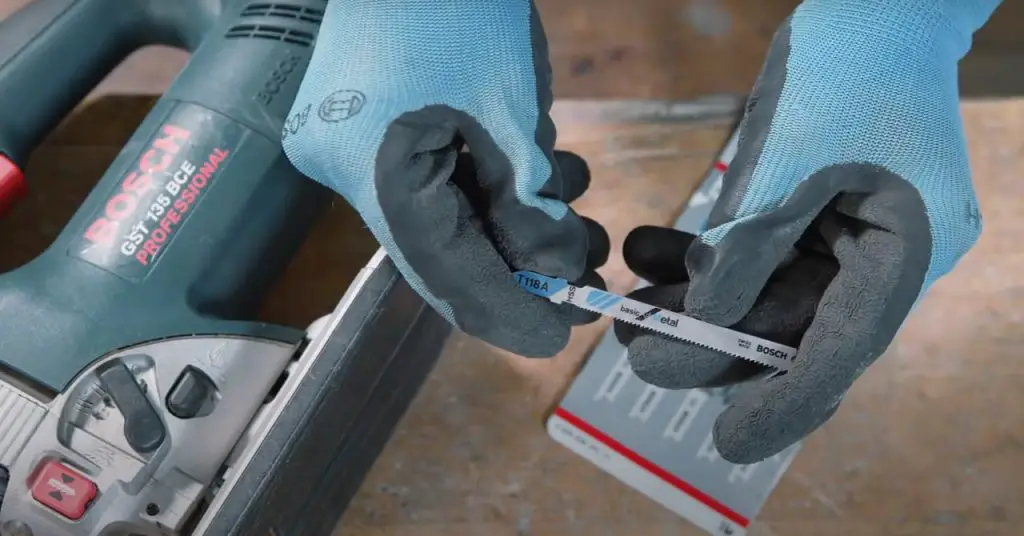Can a Jigsaw cut a Metal Pipe? If you’re working on a home improvement project that involves cutting metal pipes, you may be wondering if a jigsaw can do the job. The answer is yes! A jigsaw can cut through most types of metal pipe. In this blog post, you’ll know how to cut metal pipes using a jig saw.
To ensure success, be sure to use a blade with teeth that are designed for cutting metal. You’ll also want to use a slower speed setting on your jigsaw, as this will help to prevent the blade from overheating. And finally, be sure to clamp down the pipe so that it doesn’t move while you’re cutting it.
With these tips in mind, cutting through a metal pipe with a jigsaw is easy!
Can You Cut Metal Pipe With a Jig Saw?
Jig saws are versatile tools that can be used to cut a variety of materials, including metal. While a jig saw is not the ideal tool for cutting metal pipe, it can be done in a pinch. The key to successfully cutting metal pipe with a jig saw is to use the right blade and go slowly.

The best type of blade to use for cutting metal pipe is a carbide-tipped blade. These blades are designed specifically for cutting through tough materials like metal. Be sure to install the blade correctly in your jig saw before beginning your project. When cutting a metal pipe with a jig saw, go slowly and steadily. Don’t force the blade through the material – let the carbide teeth do the work. Cutting too quickly or forcefully will damage the blade and could cause it to break.
Can a Jigsaw Blade Cut Metal?
Yes, a jigsaw blade can cut metal. However, it is important to note that there are different types of jigsaw blades available on the market, and each type is designed for specific materials. If you plan on cutting metal with your jigsaw, be sure to purchase a blade that is specifically designed for that purpose.
These blades are typically made from high-carbon steel or bimetal construction, and they feature teeth that are coated with carbide or another hard material.
Metal Cutting Blade for Jigsaw

When it comes to metal cutting, there are a few options available. One option is to use a jigsaw with a metal cutting blade. This can be a great option for those who need to make quick, clean cuts in metal.
Here is everything you need to know about using a metal cutting blade with your jigsaw.
What Is A Metal Cutting Blade?
A metal cutting blade is specifically designed for use on metals.
These blades are made from high-quality materials that can withstand the heat and friction generated when cutting through metals. They also have teeth that are designed to quickly and cleanly cut through metal without leaving behind any burrs or rough edges.
Why Use A Metal Cutting Blade With Your Jigsaw?
There are several reasons why you might want to use a metal cutting blade with your jigsaw. One reason is that it will allow you to make cleaner, more precise cuts in metal than you could with a standard wood-cutting blade. Another reason is that it can help prolong the life of your jigsaw by preventing damage to the motor and other parts caused by the heat and friction of cutting through metals.
How To Use A Metal Cutting Blade With Your Jigsaw?
Using a metal cutting blade with your jigsaw is relatively easy. The first thing you need to do is install the blade onto your jigsaw according to the manufacturer’s instructions.
Cutting Metal Pipe With Jigsaw
If you need to cut a metal pipe, but don’t have access to a power saw, you can use a jigsaw. This process is similar to cutting other types of materials with a jigsaw, but there are a few things you need to keep in mind. First, make sure the blade you’re using is designed for cutting metal.
Second, clamp the pipe down so it doesn’t move while you’re cutting it. And third, go slowly and carefully to avoid damaging the blade or creating too many sparks/dust. Here’s a step-by-step guide:
1. Choose the right blade: A standard wood-cutting blade won’t work on metal; you’ll need a special metal-cutting blade. There are two main types of blades available: those with teeth that are coated in bi-metal and those with carbide teeth. Bi-metal blades are less expensive but wear out more quickly; carbide blades cost more but will last longer.
2. Clamp the pipe: You don’t want the pipe moving around while you’re trying to cut it, so clamp it down firmly before starting. If possible, use a vise or other type of clamp that will allow you to position the pipe so that your cuts are as straight as possible. 3. Cut slowly and carefully: Start by making shallow cuts until you get the hang of how fast or slow to go; then increase your speed slightly if needed.
But be careful not to push too hard or go too fast, as this can damage both the blade and the material you’re trying to cut through (metal pipes can be especially brittle).

A trick to cut a metallic pipe with the jigsaw table
Best Jigsaw for Cutting Metal
If you’re looking for the best jigsaw for cutting metal, you’ve come to the right place. In this blog post, we’ll provide detailed information about the different types of jigsaws available on the market and which ones are best suited for cutting metal.
There are two main types of jigsaws: corded and cordless.
Corded jigsaws are more powerful and can handle tougher materials, but they’re also more expensive and require an outlet to operate. Cordless jigsaws are less powerful but more convenient since they don’t need an outlet.
When it comes to choosing a jigsaw for cutting metal, we recommend going with a corded model.
They’re simply more powerful and will make quick work of any metal cutting project you have. That said, there are some great cordless models out there that will do the job just fine if you don’t mind spending a bit extra.
Here are our top picks for the best jigsaw for cutting metal:
Corded: Makita 4329K 3.9 Amp Variable Speed Top-Handle Jig Saw Kit
Cordless: DEWALT 20V MAX XR Lithium-Ion Brushless Jig Saw
How Thick Can Jigsaw Cut
Jigsaws are one of the most versatile tools in a woodworker’s arsenal. With the right blade, they can cut through material up to 6 inches thick. That said, there are a few things to keep in mind when cutting thick material with a jigsaw.
First, you’ll need to use a blade designed for cutting thick material. A standard wood-cutting blade simply won’t do the trick. Second, take your time and make sure your cuts are straight and precise – this isn’t the tool for quick, rough cuts.
And finally, be extra careful when sawing through thicker material – it’s easy to lose control of the saw and cause serious injury. With those caveats in mind, let’s take a look at how to cut thick material with a jigsaw. The first step is to select the right blade for the job.
There are two main types of blades designed for cutting thick material: tungsten carbide blades and high-speed steel (HSS) blades. Tungsten carbide blades are more expensive but stay sharper longer and can handle tougher materials like ceramic tile and metals (in addition to wood). HSS blades are less expensive but will dull more quickly – they’re best suited for softer woods like pine or fir.
Once you’ve selected the right blade, it’s time to get started on your project. If possible, clamp your workpiece down before beginning your cut – this will help ensure clean, straight cuts (and it’s just safer overall). Start by drilling a pilot hole at the start of your cutline – this will give you something to guide the sawblade into as you begin your cut.
Then simply follow your marked line as you would with any other jigsaw cut, taking care not to go too fast or force the blade through the wood (this could cause it to break). And that’s all there is to it! With patience and attention to detail, anyone can successfully cut thick material with a jigsaw – just be sure to choose the right blade for the job at hand.
Can a Jigsaw Cut 1/4 Steel
A jigsaw is a versatile tool that can be used for a variety of tasks, including cutting through steel. While most jigsaws are designed to cut through softer materials like wood and plastic, some models are powerful enough to handle tougher materials like metal. When cutting through steel, it’s important to use the correct blade and take your time so you don’t overheat the motor or damage the blade.
In general, a 1/4-inch steel plate can be cut with a standard wood-cutting blade if you go slowly and use light pressure. If you’re working with a thicker piece of steel, you may need to use a specialized metal-cutting blade.
Bosch Metal Cutting Jigsaw
Bosch is a leading manufacturer of metal cutting jigsaws, and their products are known for their quality and durability. The Bosch Metal Cutting Jigsaw is no exception, and it’s a great tool for anyone who needs to make quick, clean cuts in metal. This jigsaw features a powerful 6.5-amp motor that can handle even the toughest metals, and it has a variable speed control that allows you to adjust the speed to match the material you’re cutting.

The blade is also adjustable, so you can use different blades for different materials and thicknesses. The Bosch Metal Cutting Jigsaw also has an LED light that illuminates the cut line, making it easier to see what you’re doing. And if you need to make long cuts, there’s an integrated dust blower that keeps the area clear so you can see what you’re doing.
Overall, the Bosch Metal Cutting Jigsaw is a great tool for anyone who needs to make quick, clean cuts in metal. It’s easy to use and has plenty of power to get the job done right.
Jigsaw Blade for Pvc Pipe
If you’re working with PVC pipe, you need the right blade to get the job done. That’s where the jigsaw blade for PVC pipe comes in. This type of blade is specifically designed to cut through PVC material quickly and cleanly.
When choosing a jigsaw blade for PVC pipe, it’s important to select one that is made from high-quality materials. The last thing you want is for your blade to break mid-cut. A good rule of thumb is to choose a blade that is at least 18 inches long.
This will give you plenty of room to work with and will help ensure a clean cut. Another important consideration is the teeth on the blade. You want a blade with fine teeth so that it can make precise cuts without damaging the PVC material.
Look for a blade with 10 or more teeth per inch for the best results. With the right jigsaw blade, cutting through PVC pipe will be a breeze. Be sure to select a quality product so that you can get the job done right every time!
Can You Cut Stainless Steel With a Jigsaw
If you’re wondering if you can cut stainless steel with a jigsaw, the answer is yes! However, there are a few things to keep in mind when attempting this type of cut. First, it’s important to use a blade that is specifically designed for cutting stainless steel.
Regular jigsaw blades will quickly become dull when cutting through this tough material. Second, make sure to use a slower speed setting on your jigsaw when cutting stainless steel. This will help to prevent the blade from overheating and becoming damaged.
Finally, be extra careful when making cuts in stainless steel – it’s easy to create dangerous sparks that could cause a fire!
FAQ
What is the Best Tool to Cut Metal Pipe?
There are a few different types of tools that can be used to cut metal pipes. A hacksaw is a handheld tool that can be used to cut through smaller-diameter pipes. A power saw, such as a circular saw or chop saw, can be used to cut through larger diameter pipes.
A plasma cutter uses an electrical arc to cut through metal and is often used on thicker pipes.
Can You Use a Jigsaw to Cut Pipe?
If you’re cutting pipe that’s less than an inch in diameter, you can probably get away with using a jigsaw. But anything over an inch in diameter is going to be tough to cut with a jigsaw.
You’re better off using a Sawzall or another type of power saw for cutting pipe.
Conclusion
Most jigsaws can cut through metal if you use the right blade. However, it’s important to use a blade that is designed for cutting metal. Otherwise, you run the risk of damaging your saw or not being able to make a clean cut.
Here are a few tips for how to cut metal pipe with a jigsaw:
1. Choose the right blade. There are many different types of blades available, so be sure to select one that is specifically designed for cutting metal.
2. Use a slower speed setting. A higher speed setting will cause the blade to overheat and potentially break.
3. Guide the blade slowly and steadily through the material.

I’m John Carry, also known as a woodworker I have been a professional saw expert for over 10 years. I’d work with every type of saw machine out there, and experiment to find which tools work better.
I’m always looking for ways to improve my skills and help those around me. I love my job and am always happy to share my knowledge with others.


